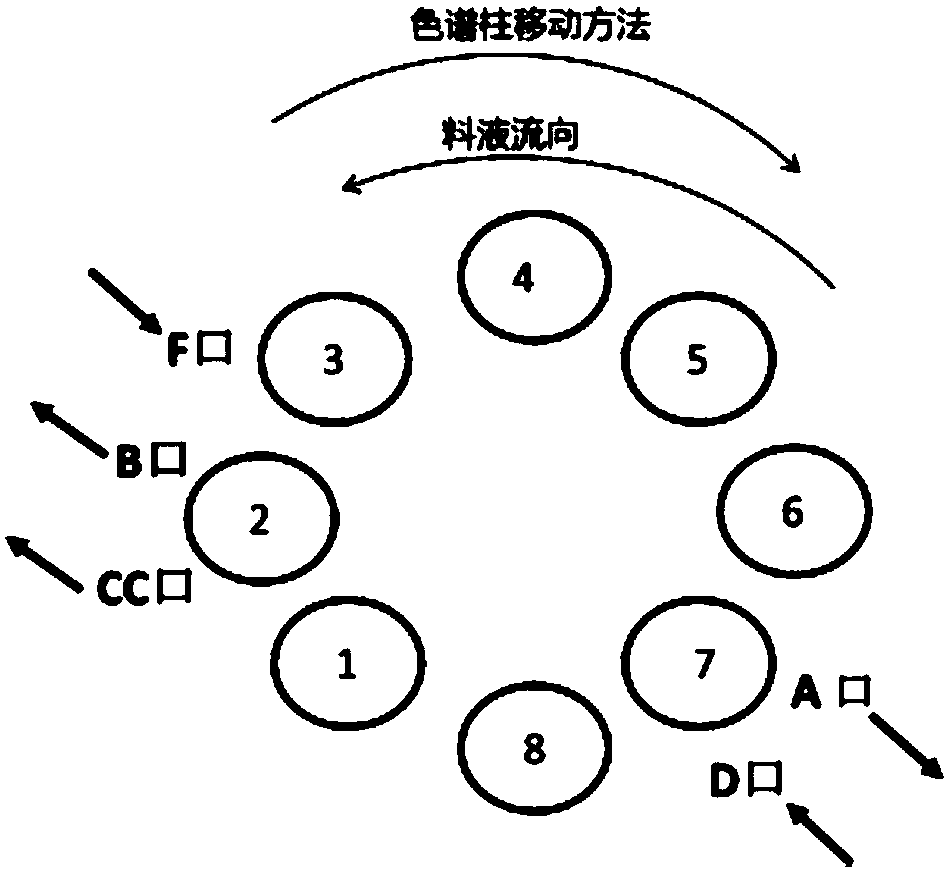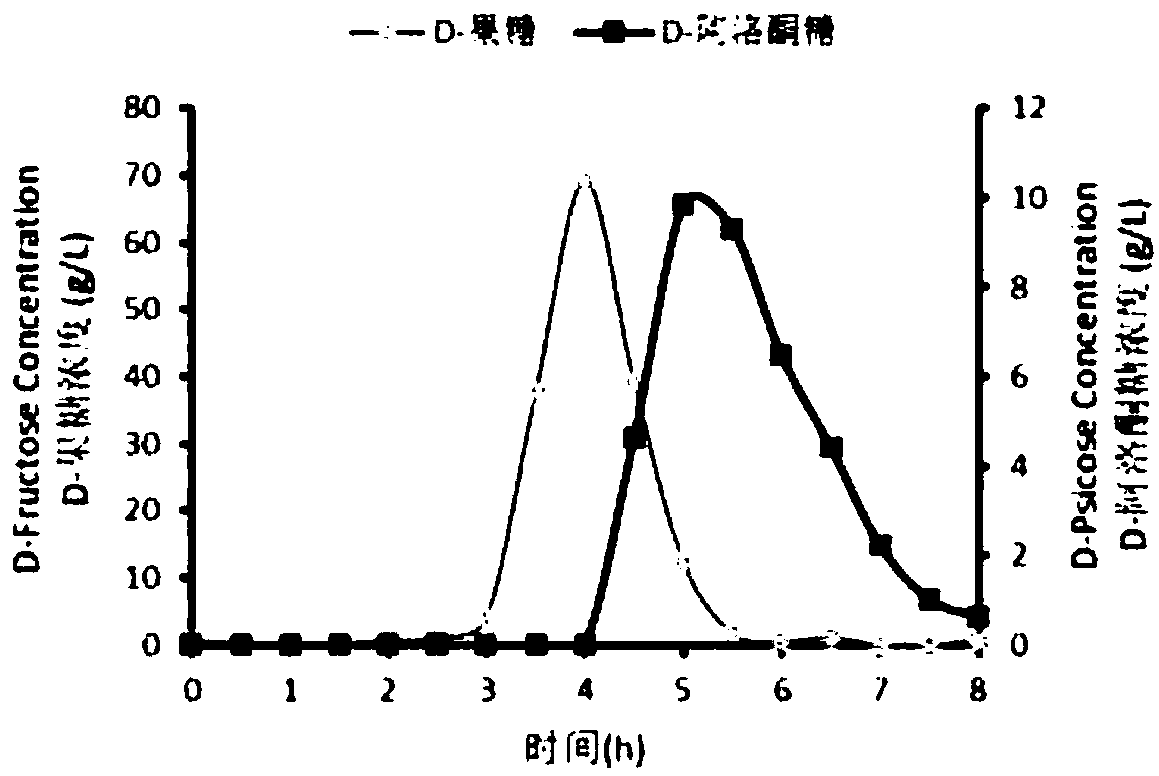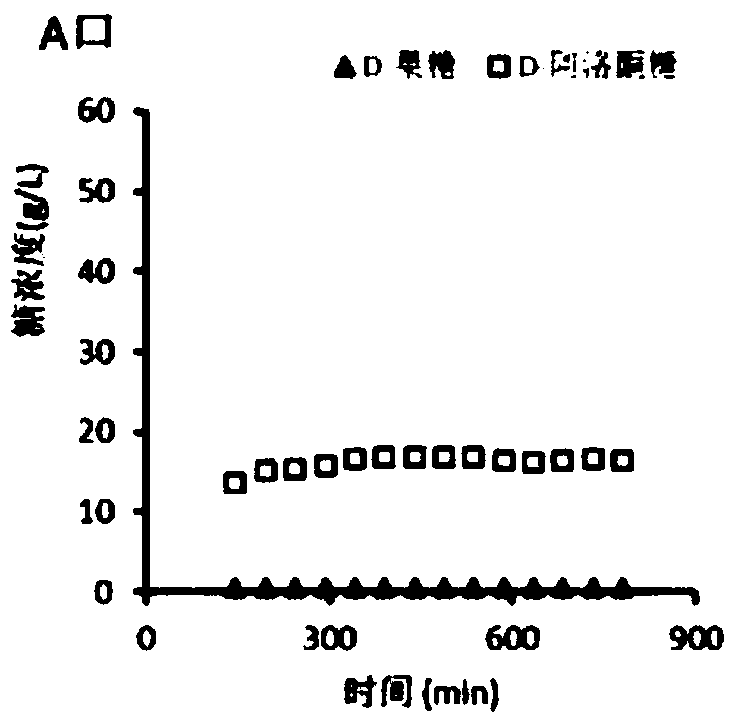Method of separating D-fructose and D-psicose by using simulated moving bed
A technology for simulating a moving bed and allulose, applied in chemical instruments and methods, monosaccharides, sugar derivatives, etc., can solve problems such as high prices, limited market scale and application, and low purity of allulose and fructose , to increase the mechanical strength and improve the hole-making effect
- Summary
- Abstract
- Description
- Claims
- Application Information
AI Technical Summary
Problems solved by technology
Method used
Image
Examples
Embodiment 1
[0036] A method for separating D-fructose and D-psicose using a simulated moving bed, comprising the following steps:
[0037] (1) Conversion of D-psicose: D-fructose is converted into D-psicose by immobilized D-psicose epimerase nanospheres to obtain D-fructose and D-alpha Mixed sugar solution of ketose;
[0038] (2) Pretreatment of the mixed sugar solution: dilute the mixed solution of D-fructose and D-psicose with water to a sugar content of 5%, vacuum filter with a 0.45 μm filter membrane to remove impurities, and then pass through a granular carbon chromatographic column. Decolorization pretreatment to obtain mixed sugar liquid raw materials;
[0039] (3) Sequential simulated moving bed separation: such asfigure 1 As shown, the pretreated mixed sugar solution is separated by sequential simulated moving bed chromatography equipment, and the equipment is distributed by a rotary valve with 12 inlets and 13 outlets, and 8 ring-connected adsorption separation Column and 4 co...
Embodiment 2
[0049] A method for separating D-fructose and D-psicose using a simulated moving bed, comprising the following steps:
[0050] (1) Conversion of D-psicose: D-fructose is converted into D-psicose by immobilized D-psicose epimerase nanospheres to obtain D-fructose and D-alpha Mixed sugar solution of ketose;
[0051] (2) Pretreatment of the mixed sugar solution: dilute the mixed solution of D-fructose and D-psicose with water to a sugar content of 8%, vacuum filter with a 0.45 μm filter membrane to remove impurities, and then pass through a granular carbon chromatographic column. Decolorization pretreatment to obtain mixed sugar liquid raw materials;
[0052] (3) Sequential simulated moving bed separation: such as figure 1 As shown, the pretreated mixed sugar solution is separated by sequential simulated moving bed chromatography equipment, and the equipment is distributed by a rotary valve with 12 inlets and 13 outlets, and 8 ring-connected adsorption separation Column and 4 ...
Embodiment 3
[0062] A method for separating D-fructose and D-psicose using a simulated moving bed, comprising the following steps:
[0063] (1) Conversion of D-psicose: D-fructose is converted into D-psicose by immobilized D-psicose epimerase nanospheres to obtain D-fructose and D-alpha Mixed sugar solution of ketose;
[0064] (2) Pretreatment of the mixed sugar solution: dilute the mixed solution of D-fructose and D-psicose with water to a sugar content of 10%, vacuum filter with a 0.45 μm filter membrane to remove impurities, and then pass through a granular carbon chromatographic column. Decolorization pretreatment to obtain mixed sugar liquid raw materials;
[0065] (3) Sequential simulated moving bed separation: such as figure 1 As shown, the pretreated mixed sugar solution is separated by sequential simulated moving bed chromatography equipment, and the equipment is distributed by a rotary valve with 12 inlets and 13 outlets, and 8 ring-connected adsorption separation Column and 4...
PUM
 Login to View More
Login to View More Abstract
Description
Claims
Application Information
 Login to View More
Login to View More - R&D
- Intellectual Property
- Life Sciences
- Materials
- Tech Scout
- Unparalleled Data Quality
- Higher Quality Content
- 60% Fewer Hallucinations
Browse by: Latest US Patents, China's latest patents, Technical Efficacy Thesaurus, Application Domain, Technology Topic, Popular Technical Reports.
© 2025 PatSnap. All rights reserved.Legal|Privacy policy|Modern Slavery Act Transparency Statement|Sitemap|About US| Contact US: help@patsnap.com



